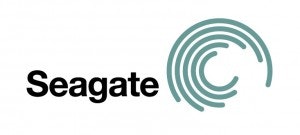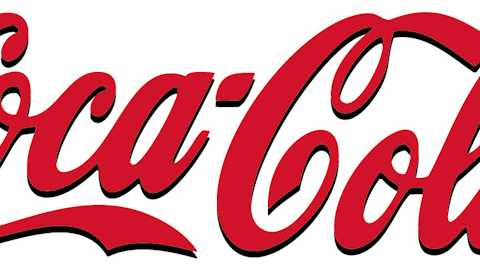Editor’s Note: This article was originally published last month.
At the Ira Sohn conference on Wednesday, Jim Chanos gave a presentation on being short Seagate Technology PLC (NASDAQ:STX). Chanos has been negative on the entire PC industry citing the explosion in smartphones and tablets are eroding PC sales.
In June 2012, he called Hewlett-Packard Company (NYSE:HPQ) the ultimate value trap as it meets all five points of the characteristics for a value stock.
Cyclical and/or overly dependent on one product
Hindsight drives expectations
Marquis management and/or famous investor(s)
Appears cheap using management’s metric
Accounting issues
Regarding PC’s, he presents that PC sales numbers peaked in 2012 and has reversed into a decline in sales from the first quarter of 2013.
Here is a summarized version of his short thesis on Seagate Technology PLC (NASDAQ:STX) and then I’ll get into some numbers to poke and see whether there are any signs of a failing industry.
Stock price is inflated due to higher prices. Chanos cites that hard drive prices are approaching 10% of PC prices.
PC industry operates on thin margins and as sales and prices come down, the price of hard drives is not sustainable. Chanos cites that Toshiba has announced its hard drive margins will be drop by half this year.
Pricing will come under pressure from competition of digital storage space
A Dangerous Short?
Although Seagate Technology PLC (NASDAQ:STX) is hitting new highs, check out these numbers taken from the Old School Value valuation and analysis spreadsheets.

I have learned not to short, or claim a company is overpriced, based on stock price alone. Same thing applies to Seagate when looking at these numbers. You wouldn’t know that judged on the latest figures that Seagate is at all time highs. Even at these levels, these ratios are within value stock ranges.
Since Chanos is not claiming Seagate Technology PLC (NASDAQ:STX) to be a good short because it is overpriced, but rather than business is bound to fail due to a fall in margins and drops in sales, let’s analyze those two areas.
Analyzing the Margins
The easiest thing to do is to draw a simple graph depicting the gross, operating and net margins.

Let’s just say for the sake of giving Seagate the benefit of the doubt, that the recession in 2009 is an anomaly. If this is the case, the operating income of Seagate from 2003-2008 was averaging 9.2%. In the last three years and TTM, it has jumped to 15.6% and Chanos’ question comes into mind.
Are the price of hard drives sustainable?

Physical storage is a commodity business with no moat so I find it difficult to believe that prices can stay high enough to maintain the current margins.
Does the DuPont Analysis Show Anything?
Taking it one step further, does the DuPont analysis point to any signs that the growth and increase in business performance is coming from anything other than improvements in margins?
See the 3 step and 5 step DuPont analysis below.

Looking over the golden years, the increases in ROE were due to
increase in margins
increase in asset turnover
reduction of interest
reduction in leverage
From a business and operational perspective, Seagate is on fire. They are doing everything right.
So far, Chanos certainly isn’t shorting Seagate Technology PLC (NASDAQ:STX) based on fundamental deterioration. He is taking a top down approach by believing that the downfall of the PC industry will cascade into the hard drive space.
Inventory Analysis and Interpretation
Since the ROE didn’t show anything strange, let’s take a look at Chanos’ angle of sales set up to fall.
One of the leading indicators of sales is inventory and the way to do that is to analyze the details of the inventory to predict whether the company is expecting a boom or bust in sales.
Inventory is made up of raw materials, works in progress, purchased components, and finished goods.
If you take a look at the area I highlighted, the latest quarter is showing a disturbing difference compared to the same period over dating back 10 years.
The last time there was such a drop in works in progress was back in 2004. Seagate Technology PLC (NASDAQ:STX) was making more products even during the recession. Is this what Chanos was talking about?
Now that finished goods for the latest quarter is up 94% compared to one year ago, the next few quarters will be a telling sign depending on whether the inventory sells.
Here is another look by reviewing the quarters sequentially.
The way the inventory line items integrate with each other is like this.
Company buys raw materials when prices are cheap or when there is an expected increase in orders and sales
As orders come in, “works in progress”.
Finished goods decrease as it is sold off and then replaced with new inventory once the works in progress products are complete
Additional interpretations to know:
Raw materials up, works in progress up, finished goods same or down = Good sign. More orders are coming in. Company is selling quicker than they can make.
Raw material up, works in progress up, finished goods up = Need to watch. If the following quarters continue to show finished goods going up, then that’s bad as the company can’t sell its inventory or is making too much. On the flipside, if finished goods go down, then it has become a good sign.
Raw materials down, works in progress down, finished goods down = Bad sign. Business is slowing down. Could be cyclical, but expect lower turnover or sales.
Raw materials down, works in progress down, finished goods up = Horrible sign. There is a glut of inventory that needs to be cleared. New orders are not coming in and current inventory will likely be sold off at a discount.
Applying this interpretation to Seagate Technology PLC (NASDAQ:STX), the line that draws my eye is works in progress. Compare it to the previous periods and there are big differences.
When it comes to inventory for Seagate, Chanos may be onto something, but there is nothing concrete at the moment.
Accounting Manipulation Checks
Running a quick earnings manipulation check via the Beneish M score, the score comes out to be a solid -3.03.
While the Beneish score or models can never replace a thorough and manual investigation, a cursory look reveals that Seagate doesn’t have any earnings manipulation factors to worry about.
If you are adventurous, here is a list of 52 techniques you can perform for detect financial manipulation.
Is Chanos Right or Wrong?
It is too early to tell.
Because it seems like he is shorting based on a top down approach, we’ll see whether his thesis plays out. I’m just not in the game of predicting industry trends.
If Seagate Technology PLC (NASDAQ:STX) was showing fundamental flaws and a breakdown in fundamentals, then it could be come a compelling case, but Seagate does not fit into a value trap mold or one to short at this time unless you have deep pockets and can ride out margin calls.
This article was originally written by Jae Jun, and posted on OldSchoolValue.









